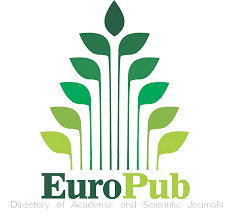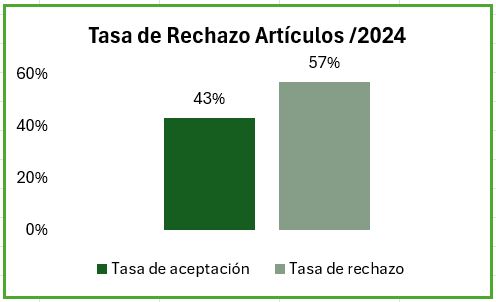Flammability of forest species representative of the Andean Forest under laboratory conditions
Keywords:
bosque, combustible, fuego, inflamable, laboratorioAbstract
In Ecuador, the knowledge of the flammability of live and dead forest fuels is limited, focusing said knowledge on a few species, especially exotic ones. The objective of the research was to determine the flammability of living forest fuels under laboratory conditions and thus enrich knowledge about the dynamics of fire and its behavior. Five representative forest species of the Andean Forest of the “Francisco Vivar Castro” University Park were selected, which were: Alnus acuminata, Clethra fimbriata, Myrsine sodiroana, Palicourea amethystina, and Prunus opaca. Using the direct flame method, the characteristics of flammability, ignition time, sustainability, combustibility, and flame height were calculated. Five grams of sample were used per test, with a total of fifty replicates per species. Among the five forest species, the values for the flammability characteristics were variable, average ignition times were recorded between 15 and 29 seconds, sustainability between 12 and 29 seconds, combustibility between 0.049 g.s-1 and 0.093 g.s-1, and heights of the Average maximum flame between 14 and 18 cm. The flammability categories of the forest species were from less flammable to moderately flammable. These results demonstrated the diversity in flammability of living forest fuels present in the native forest, with flammability characteristics with significant differences between species, important aspects for the prevention of forest fires.References
Alzate-Guarín, F., Muñoz, L., y Amell, A. (2022). Evaluación preliminar de la inflamabilidad de algunas especies de plantas cultivadas en Colombia. Hoehnea, 49. https://doi.org/10.1590/2236-8906-49/2021
Aguirre, Z., González, L., Jaramillo, N., y Peña, J. (2021). Monitoreo de la sucesión de especies vegetales leñosas bajo una plantación de Pinus radiata D. Don, en el parque universitario “Francisco Vivar Castro”, provincia de Loja, Ecuador. South Florida Journal of Development, 2(1), 1018–1039.
Aguirre, Z., Reyes, B., Quizhpe, W., & Cabrera, A. (2017). Composición florística, estructura y endemismo del componente leñoso de un bosque montano en el sur del Ecuador. In Arnaldoa (Vol. 24, pp. 543–556). scielo.
Aguirre, Z., y Yaguana, C. (2014). Parque Universitario de Educación Ambiental y Recreación Ing. Francisco Vivar Castro. Universidad Nacional de Loja, 30.
Bravo, E. (2014). La Biodiversidad en el Ecuador (Universida).
Carrasco, Y., Ramos, M., Mesa, J., Caso, Y., y Martínez, L. (2016). Inflamabilidad de especies vegetales del ecosistema de pinares. Revista Cubana de Ciencias Forestales: CFORES, 4(1).
De Magalhães, R. M. Q., y Schwilk, D. W. (2012). Leaf traits and litter flammability: Evidence for non-additive mixture effects in a temperate forest. Journal of Ecology, 100(5), 1153–1163. https://doi.org/10.1111/j.1365-2745.2012.01987.x
Etlinger, M., & Beall, F. (2005). Development of a laboratory protocol for fire performance of landscape plants. International Journal of Wildland Fire, 13, 479–488. https://doi.org/10.1071/WF04039
Freire, K. G. (2019). EStimación de la humedad del combustible vivo usando imágenes sentinel-2 en parcelas forestales de la comunidad Valenciana. GEOESPACIAL, 17(1), 1--13.
Giler, L. (2020). Comportamiento del fuego en combustibles superficiales de una plantación de Eucalyptus sp. en Santa Ana, Manabí, Ecuador [Tesis de pregrado, Universidad Estatal del Sur de Manabí]. https://repositorio.iniap.gob.ec/bitstream/41000/5586/1/iniapeeptesisLGILER2020.pdf
Gould, W. (2009). Fire ecology and management. Ambio, 37, 521.
Guarín, F., Muñoz, L., & Amell, A. (2022). Evaluación preliminar de la inflamabilidad de algunas especies de plantas cultivadas en Colombia. Hoehnea 49. https://www.scielo.br/j/hoehnea/a/FZ5YWpcZW8xTBppSzyFzTfN/?format=pdf&lang=es
Guerrero, F., Hernández, C., Toledo, M., Espinoza, L., Yulian, C., Arriaga, A., Muñoz, A., Taborga, L., Bergmann, J., y Carmona, C. (2021). Leaf Thermal and Chemical Properties as Natural Drivers of Plant Flammability of Native and Exotic Tree Species of the Valparaíso Region, Chile. Journal of Environmental Reserach and Public Health., 18(13), 7191. https://doi.org/10.3390/ijerph18137191
Guill, M., y Moore, P. (1996). IGNITIBILITY OF LEAVES OF AUSTRALIAN PLANTS. CSIRO Plant Industry.
Hachmi, M., Sesbou, A., Benjelloun, H., Handouz, N., & Bouanane, F. (2011). A Simple Technique to Estimate the Flammability Index of Moroccan Forest Fuels. Journal of Combustion, 2011.
Islebe, G. A., Valdez Hernández, M., y Sánchez Sánchez, O. (2007). Flora arbórea y caracterización de gremios ecológicos en distintos estados sucesionales de la selva mediana de Quintana Roo. Foresta Veracruzana, 9(2), 17–26. https://www.redalyc.org/articulo.oa?id=49790203
Kane, J., y Prat-Guitart, N. (2018). Fuel Moisture. pp. 1–13. https://doi.org/10.1007/978-3-319-51727-8_115-1
Liodakis, S., Bakirtzis, D., & Dimitrakopoulos, A. (2002). Ignition characteristics of forest species in relation to thermal analysis data. Thermochimica Acta, 390(1), 83–91. https://doi.org/https://doi.org/10.1016/S0040-6031(02)00077-1
Manrique-Toala, T. O., Ramos-Rodríguez, M. P., Cruz-Rosales, G. E. D. L., Tigua-Pinela, Y. Y., & Pincay-Ortega, S. A. (2022). Uso del fuego en tierras de vocación forestal del cantón Jipijapa, Manabí, Ecuador. Bosques Latitud Cero, 12(2), 42-51.
Marino, E., Madrigal, J., Guijarro, M., Hernando, C., Díez, C., & Fernández Filgueira, C. (2010). Flammability descriptors of fine dead fuels resulting from two mechanical treatments in shrubland: A comparative laboratory study. International Journal of Wildland Fire, 19. https://doi.org/10.1071/WF08123
Muñoz-Chamba, L., Cabrera, B., Muñoz, J., y Aguirre, Z. (2021a). Parámetros poblacionales de tres especies arbóreas del bosque andino en el Parque Universitario “Francico Vivar Castro” Loja, Ecuador. Bosque Latitud Cero, 11(1), 128–147. https://drive.google.com/file/d/1LtouLUM2CbhAUEi8mYBARInY8xiN7_Pi/view
Muñoz-Chamba, L., Muñoz, J., y Aguirre, Z. (2021b). Estructuras poblacionales de especies forestales representativas en el Parque Universitario Francisco Vivar Castro. Libro Memorias del II Simposio de Investigación Científica, Loja, Ecuador.
Palacios, W., y Jaramillo, N. (2004). Gremios ecológicos forestales del noroccidente del Ecuador: Implicaciones en el manejo del bosque nativo. Lyonia, 6(2), 55–75.
Paton, D., Buergelt, P. T., Tedim, F., y McCaffrey, S. (2015). Chapter 1 - Wildfires: International Perspectives on Their Social—Ecological Implications (J. F. Shroder & D. B. T.-W. H. Paton Risks and Disasters (eds.); pp. 1–14). Elsevier. https://doi.org/https://doi.org/10.1016/B978-0-12-410434-1.00001-4
Pazmiño, D. (2019). Peligro de incendios forestales asociado a factores climáticos en Ecuador. FIGEMPA: Investigación y Desarrollo, 7(1), 1-9. https://doi.org/10.29166/revfig.v1i1.1800
Pérez, A., Rodríguez, D., y Contreras, R. (2009). Inflamabilidad de combustibles forestales en las selvas de Calakmul, Campeche. In Universidad y ciencia, Vol. 25, pp. 121–132.
Petriccione, M. (2006). INFIAMMABILITÀ DELLA LETTIERA DI DIVERSE SPECIE VEGETALI DI AMBIENTE MEDITERRANEO. In Università Degli Studi Di Napoli Federico II.
Plana, E., Font, M., y Serra, M. (2016). Los incendios forestales, guia para comunicadores y periodistas. Proyecto EFIRECOM. Ediciones CTFC., 32.
Popović, Z., Bojović, S., Marković, M., y Cerdà, A. (2021). Tree species flammability based on plant traits: A synthesis. Science of The Total Environment, 800, 149625. https://doi.org/https://doi.org/10.1016/j.scitotenv.2021.149625
Rivadeneria, T. I. (2011). Análisis de metabolitos secundarios de Lachemilla orbiculata (Ruiz & Pavón) Rydb. (Rosaceae) en dos localidades de los Andes del Ecuador. [PONTIFICIA UNIVERSIDAD CATÓLICA DEL ECUADOR]. http://repositorio.puce.edu.ec/bitstream/handle/22000/4937/tesis tania gonzalez.pdf?sequence=3&isAllowed=y
Ramos-Rodríguez, M., Coronel, O. G. P., González, A. J., Cevallos, C. G. C., Zúñiga, M. V. T., & Jalca, O. F. M. (2019). Comportamiento del fuego a escala experimental en una plantación de Tectona grandis L.f. En Jipijapa, Manabí, Ecuador. Revista Brasileira de Ciências Agrárias, 14(1), 1-9. https://doi.org/10.5039/agraria.v14i1a5607
Ramos-Rodríguez, M., Medranda-Mendieta, J., Manrique-Toala, T., Grás-Rodríguez, R., y Estévez-Valdés, I. (2020). Comportamiento histórico de los incendios forestales en el Cantón Rocafuerte, provincia Manabí, Ecuador, en el periodo 2016 – 2019. Revista Forestal Mesoamericana Kurú, 17(41), 37–46. https://doi.org/10.18845/rfmk.v17i41.5282
Ramos-Rodríguez, M. P., Alcívar-Cobeña, A., Cedeño-Luna, N. A., Manrique-Toala, T. O., (2022). Usos tradicionales del fuego en las actividades agrícolas de la parroquia Convento, cantón Chone, Manabí, Ecuador. Revista Cubana de Ciencias Forestales, 10(3), 319–335.
Ramos-Rodríguez, M. (2010). Manejo del Fuego. Editorial Félix Varela.
RStudio Team (2020). RStudio: Integrated Development for R. RStudio, PBC, Boston, MA http://www.rstudio.com/
Sarukhán, J., y Dirzo, R. (2013). Biodiversity-Rich Countries (S. A. B. T.-E. of B. (Second E. Levin (ed.); pp. 497–508). Academic Press. https://doi.org/https://doi.org/10.1016/B978-0-12-384719-5.00351-8
Sistema Nacional de Gestión de Riesgos del Ecuador [SNGRE]. (2021). Informe de situación Nro. 23 de Incendios Forestales a nivel Nacional.
White, R., y Zipperer, W. (2010). Testing and classification of individual plants for fire behaviour: plant selection for the wildland-urban interface. International Journal of Wildland Fire, 19, 213–227.
Wong, J. C., y Villers, M. de L. (2007). Evaluación de combustibles y su disponibilidad en incendios forestales: un estudio en el Parque Nacional La Malinche. In Investigaciones geográficas (pp. 87–103). scielomx.
Zylstra, P., Bradstock, R. A., Bedward, M., Penman, T. D., Doherty, M. D., Weber, R. O., Gill, A. M., & Cary, G. J. (2016). Biophysical Mechanistic Modelling Quantifies the Effects of Plant Traits on Fire Severity: Species, Not Surface Fuel Loads, Determine Flame Dimensions in Eucalypt Forests. PloS One, 11(8), e0160715. https://doi.org/10.1371/journal.pone.0160715
Published
How to Cite
Issue
Section
License
Copyright (c) 2023 Bosques Latitud Cero

This work is licensed under a Creative Commons Attribution-NonCommercial-ShareAlike 4.0 International License.
This work is published under the Creative Commons Attribution-NonCommercial-ShareAlike 4.0 International (CC BY-NC-SA 4.0) license. This means that users may copy, distribute, and adapt the content, provided that proper credit is given to the authors and the journal. Commercial use of the material is not permitted. Additionally, any derivative work must be distributed under the same license. This license ensures open access to knowledge, promoting the dissemination and reuse of published works for non-commercial purposes, respecting authorship, and ensuring the free circulation of content under fair terms.




























